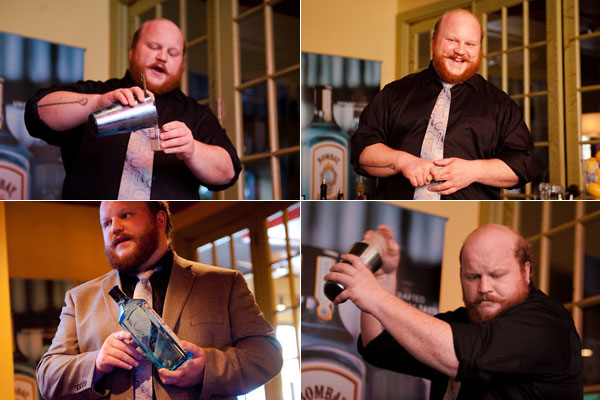
Nick Kosevich knows his gin. Anyone who tasted the Jackson Pollock at Town Talk Diner can attest to that. So when Surdyk’s announced that the bitters purveyor and one-time Heavy Table contributor was back in town to lead a class on mixing Bombay Gin cocktails, we jumped at a chance to see the master at work.
Now based in Milwaukee, he’s become, among other things, Bombay’s Midwest brand ambassador. Monday’s class focused on how each of the spices, roots, and herbs that flavor Bombay work to create a complete flavor profile. Kosevich’s foray into the world of bitters makes him the perfect authority to discuss the interplay of botanical infusions. Ginger Hop provided the setting for the class as well as some tasty appetizers.
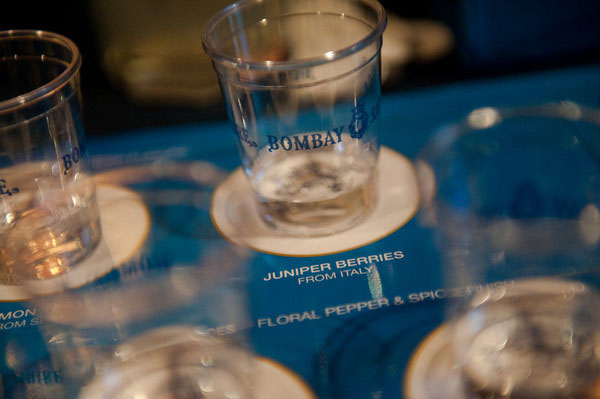
Kosevich first briefed the class on the history of gin. It was first distilled for medicinal properties. Juniper berries, the most distinctive flavoring agent, were long believed to aid stomach and kidney functions, and still feature prominently in alternative medicine. Gin was a Danish drink, favored by mercenaries (hence the term “Dutch Courage”), that came to England when William of Orange ascended to the throne. From there it became the drink of the masses, made poorly and cheaply, and the famous scourge of Dickensian England.
Bombay emerged when American spirits importer Alan Subin looked to create a classier gin to appeal to the vast, post-WWII middle class. He created the name and branding before even having a recipe, eventually coming across the centuries-old recipe in Warrington, England. When vodka took hold in the US, he added two more exotic spices to the original Bombay Dry blend to create Bombay Sapphire.
The botanical blend used to make gins is oftentimes a closely guarded trade secret – the Colonel’s “11 herbs and spices” of the spirits world. Kosevich noted that Bombay is the first major gin to speak openly about its blend. Monday’s class lined up all 10 botanicals in both their raw and distilled essence form.
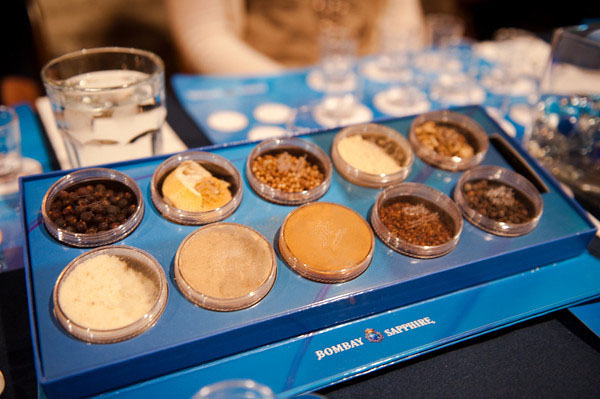
In no particular order, the mystery ingredients are juniper, lemon peel, coriander, almond, licorice root, cassia bark, orris root, angelica root, and — the two unique to Sapphire — cubeb berries and grains of paradise. Considering each of the components separately proved revelatory. The juniper was not at all like pine needles, the licorice root was super sweet and nothing like anise. Cubeb berries were easily the most interesting spice. Grown under coffee plants in Indonesia, they have an incredible, unique flavor that’s equal parts menthol, nutmeg, floral, and chocolate. One aches to have a spice mill full of them.
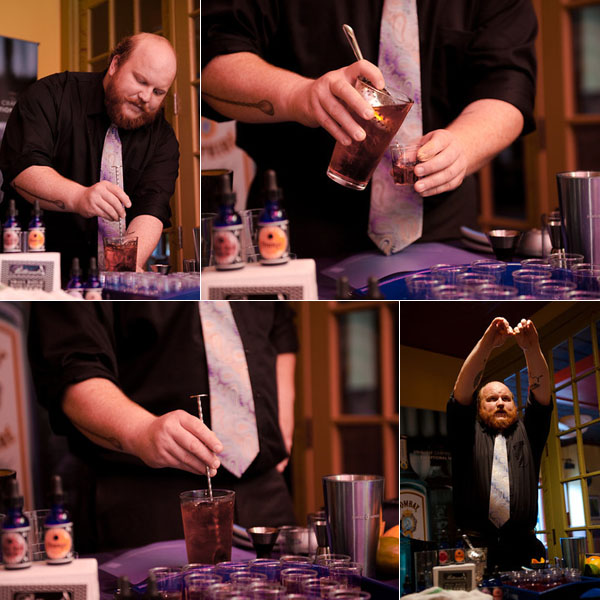
You’ll often see this kind of component tasting in evaluating wine – where essences of fruit and herbs are presented as flavors a wine might be redolent of. It’s a much more productive exercise with spirits when the components are actually in the product. It’s also helpful when considering flavor notes to introduce to your own gin cocktails. For example, Kosevich noted that coriander makes a great flavor addition to simple syrup. (An idea to spice up your next Collins, perhaps?)
Bombay’s main claim to quality is that it’s the only 100 percent vapor-infused London Dry Gin on the market. This is accomplished by means of a Carter-Head still, in which the condensed alcohol vapors pass through mesh baskets holding the botanicals. Not many spirits are made via this type of still (Hendrick’s Gin and Reyka Vodka being notable exceptions). Tanqueray and the like (so called double- and triple-fold gins) create a concentrated infusion with their botanicals and then dilute it to 80-proof with water and neutral spirits.
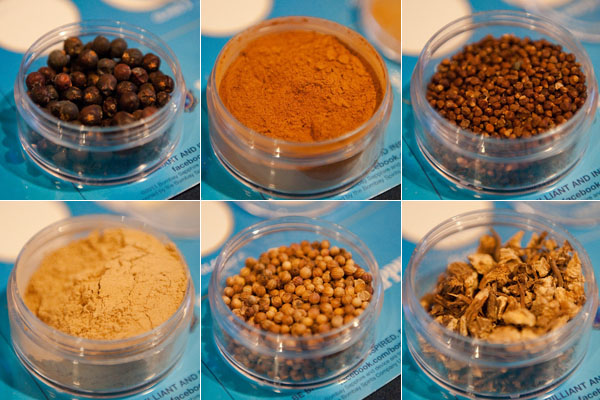
So how does Bombay taste compared to the other top shelf gins? Hendrick’s is famous for its additions of cucumber and rose water essences (hence why it is not a London Dry gin). Tanqueray’s juniper taste is more pronounced, Beefeater is a bit more pungent. As Kosevich explained it, Bombay intends to strike a balance. Though I’m sure that Tanqueray lovers would respond that the concentrated juniper flavor is exactly what they enjoy, especially if it’s just getting drowned in tonic anyway. Kosevich also extols Bombay for being bottled over-proof (45% abv), allowing the aromas of the gin to stay a little more present as it is cooled to cocktail temperature.
He ended the session by mixing two classic gin cocktails. Below are notes are from Kosevich on how to make the cocktails on your own.
The Negroni
¾ oz Bombay Sapphire
¾ oz Sweet Vermouth (He prefers Carpano Antico)
¾ oz Campari
Stir and serve up with an orange peel (squeezed over the drink to release the oils)
– Vermouth is wine, so keep it chilled because it will oxidize.
– Negronis should be stirred. General rule of thumb: Stir when a cocktail contains spirits alone. When citrus juice comes into play, shake well to incorporate.
– Orange bitters are a great addition. They soften the intense bitterness of the Campari.
– Above is the classic formula. To mitigate the bitterness a bit, try 1½ oz. gin, 1 oz. vermouth, ¾ oz. Campari. Or for even more bitterness, try a different digestivo like Fernet Branca.
The Bee’s Knees
2 oz Bombay Sapphire
¾ oz honey syrup
¾ oz lemon juice

Shake well, serve up.
– Floral-tasting bitters work very nicely here (he recommends a dropper of Bittercube’s Jamaican #2, full of grapefruit and hibiscus notes)
– Honey and mint work very well together. Try shaking it with a few mint leaves, then double strain (both Hawthorne and mesh strainer) to catch the pulp.
– Make the honey syrup by adding 1 part hot water to 4 parts honey. Also, you can squeeze some orange peels over the syrup to create an orange-blossom honey profile. You could also add a bit of sugar to the syrup. A little extra sweetness makes the honey flavor more pronounced.
Both the writer and photographer attended the class free of charge.
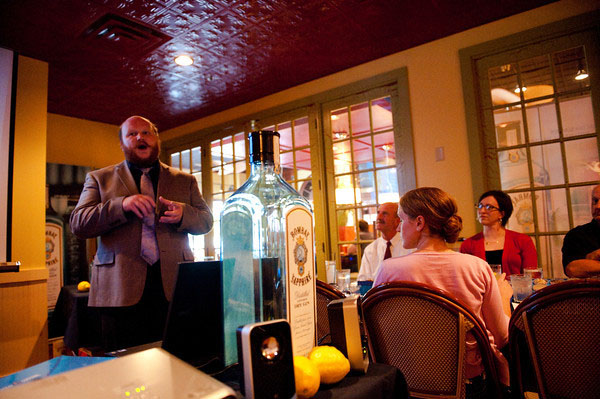

Comments are closed.